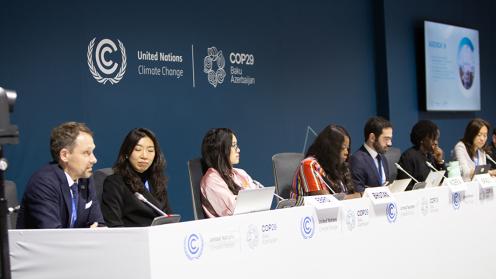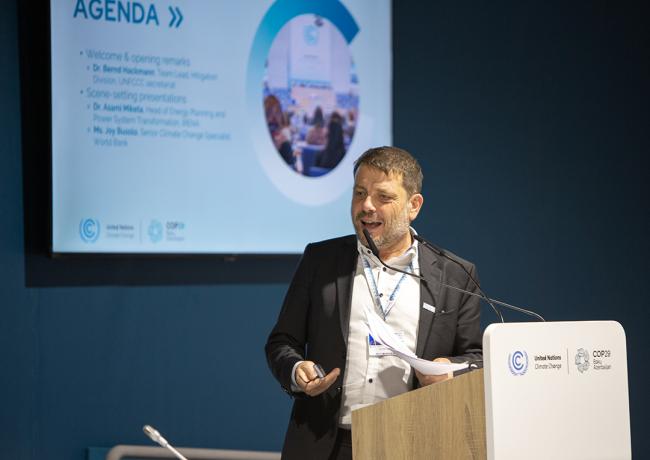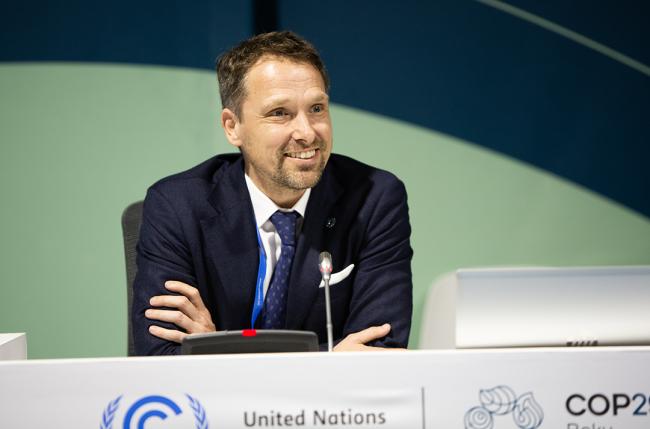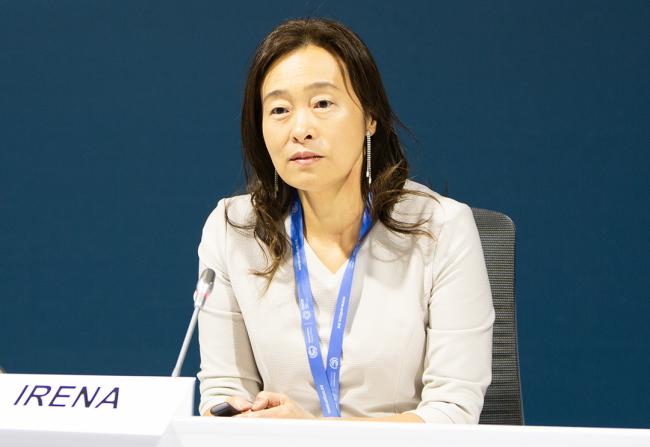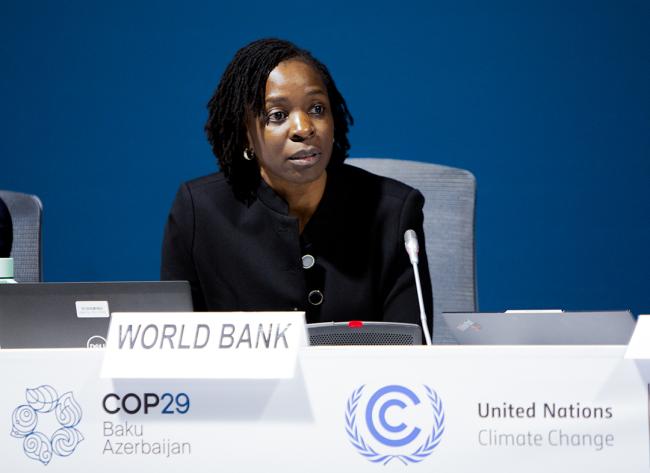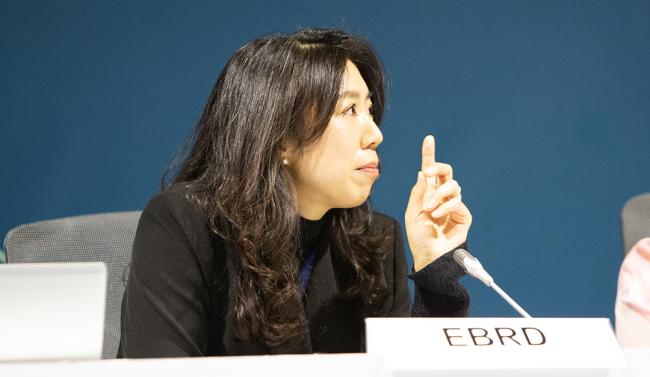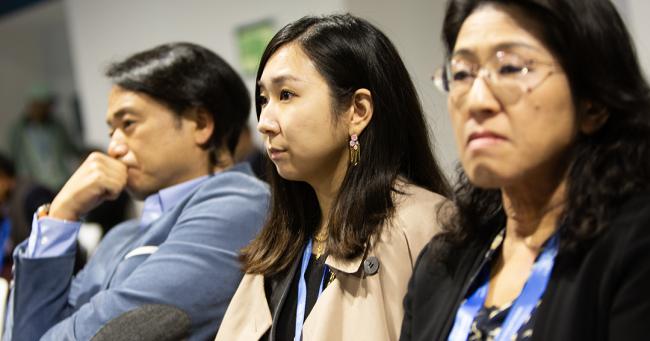About
Thanks to their clear market signals, long-term low-emission development strategies are vital to driving investments into the energy transition. How can we best help countries devise them and what success stories can show the way?
The first Global Stocktake (GST) urged Parties to develop or revise long-term low-emission development strategies (LT-LEDS) for a just transition to net-zero emissions. Long-term planning is indeed increasingly seen as vital for attracting investments by reducing risks, providing clear market signals, ensuring transparency, and fostering policy stability. This side event focused on strategies to support LT-LEDS preparation and implementation while aligning them with Nationally Determined Contributions (NDCs). It was moderated by Romeo Bertolini, NDC Partnership.
In scene-setting remarks, Bernd Hackmann, UNFCCC Secretariat, said LT-LEDS combine long-term thinking, a focus on emissions, and development strategies. He noted that, to date, 75 countries have submitted their strategies, many with net-zero targets, and that countries are encouraged to align their LT-LEDS with their NDCs. He cited Brazil’s most recent NDC as a positive example, as it treats it as a stepping stone towards a longer-term strategy.
Asami Miketa, International Renewable Energy Agency (IRENA), presented on IRENA’s Long-term Energy Scenarios (LTES) Network, which, she said, seeks to encourage knowledge exchange and good practices in the use of LTES since 2018, including how to attract financial investment into them. Describing the need to devise “investor-ready plans,” she stressed, among others, the need for risk assessments, a sound governance structure, and well-communicated plans. She said these can give important signals to investors by showing growth projects and fosters confidence. She described the need for scenarios to involve coordination among multiple ministries, including environmental and finance ministries.
In a panel discussion, Joy Busolo, World Bank, gave an overview of the Joint Multilateral Development Banks (MDBs) Long-Term Strategy Program (LTS-P), which supports countries in developing and implementing their LTSs. MDBs, she said, can help mobilize finance by linking climate policy to investments. Busolo added that they also have the technical know-how required to support countries in formulating LTSs, noting that a larger proportion of low- and middle-income countries have not yet submitted their strategy. The LTS-P, she explained, will support 20 countries over the next two to three years and will ensure coherence with NDCs in doing so.
Sung-Ah Kyun, European Bank for Reconstruction and Development (EBRD), emphasized that LTS are critical not only for climate goals but also for broader development and resilience against climate impacts. She added LTS enables understanding of how interconnected systems are affected by policies, highlighting the need for iterative feedback loops and strong, inclusive policy frameworks. Furthermore, she underscored that attracting private investment requires early involvement of private stakeholders, clear agreements on carbon budgets, and strategic funding allocation between public and private sectors.
Dawa Chhoedron, Department of Energy, Bhutan, whose country submitted their strategy in 2023, said their focus had been on adaptation as well as mitigation, as these go “hand in hand.” Lessons learned, she added, include the need to think about the monitoring and evaluation process and financing requirements of the strategy in advance.
The panel also heard about country’s experiences in developing their LT-LEDS. Amudi Chioma Felistas, Council on Climate Change, Nigeria, said her country had submitted their LT-LED in February 2024. She described several “lessons” from the experience, including the need to: align the strategy with existing policies such as the energy transition plan; include a wide range of sectors; and champion institutional collaboration.
Nabil Moura Kadri, Brazilian Development Bank, said 93% of Brazil’s power generation in 2023 came from renewable energy, thanks to a long-term energy strategy that sought to address both environmental and social concerns. Nonetheless, he added, the country has sought to diversify from hydroelectric energy only to also include wind and solar. He described the use of various financing mechanisms, such as the use of long-term investment funds, to make such projects economically viable.
In a second round of questions, panelists noted, inter alia: the need for improved institutional coordination, stressing that institutions use a different language to describe strategies; and mobilizing greater finance for 2030, Several speakers highlighted a Joint Statement by MDBs at COP 29 on this issue.
Organizer: UNFCCC
Contact: Kenichi Kitamura | LT-LEDS@unfccc.int
Website: https://unfccc.int/process/the-paris-agreement/long-term-strategies
To receive free coverage of global environmental events delivered to your inbox, subscribe to the ENB Update newsletter.
All ENB photos are free to use with attribution. For 2024 UN Climate Change Conference Baku - Side Events , please use: Photo by IISD/ENB | Angeles Estrada Vigil
